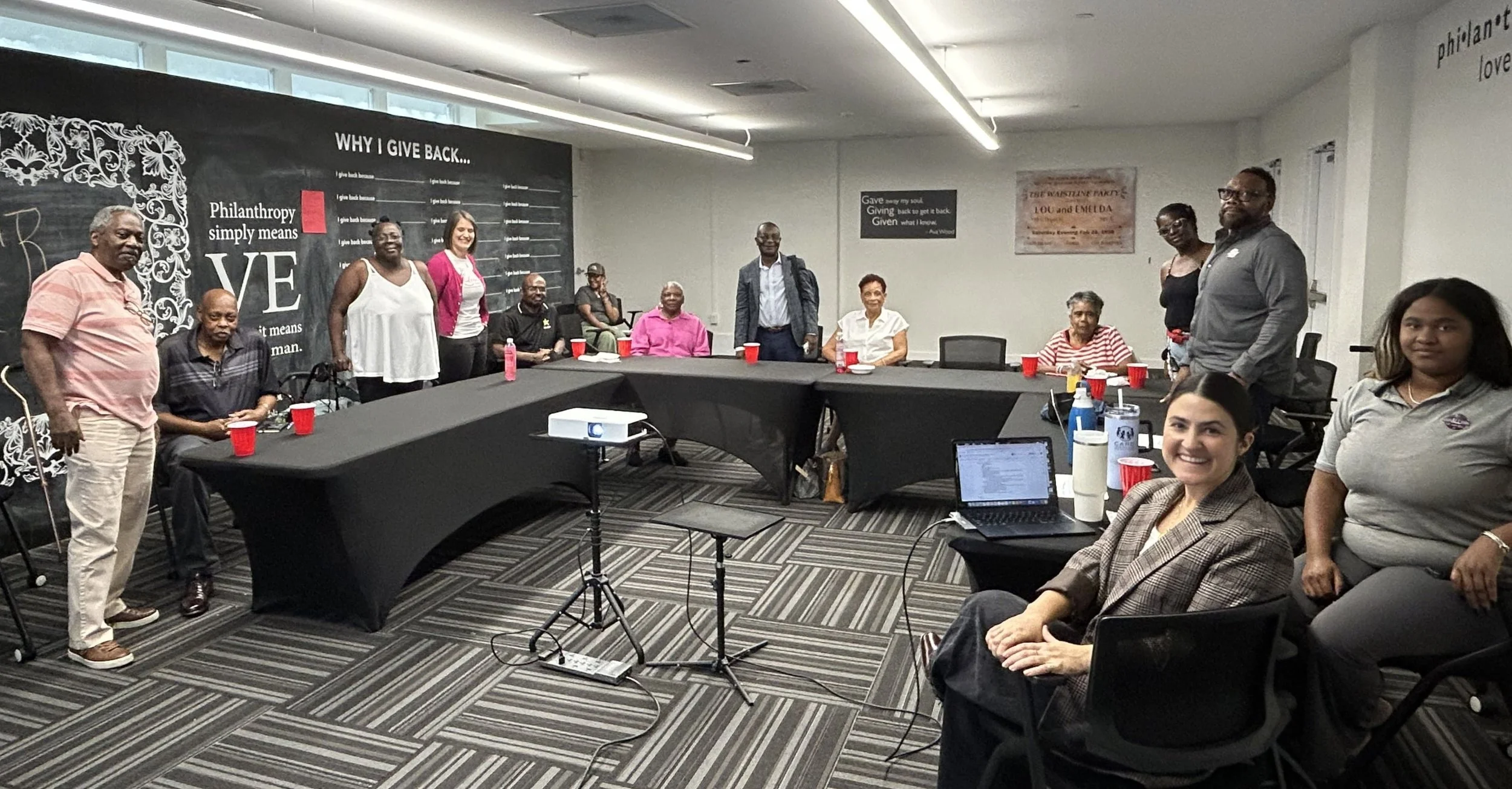Building Trust and Collaboration at the New Orleans Community Advisory Board
On October 22, 2025, community members from New Orleans East and the Lower Ninth Ward gathered at the Tate Etienne and Prevost (TEP) Center for the second meeting of the Community Advisory Board (CAB) for the Manufacturing Industry. Residents and representatives from the Lower Ninth Ward Homeownership Association, the Lower Ninth Ward Center for Sustainable Engagement and Development, the Deep South Center for Environmental Justice, Excite All Stars, and the Leona Tate Foundation and TEP Center contributed their insights to the discussion. Supported by an Environmental Protection Agency (EPA) Pollution Prevention (P2) grant, the CAB aims to strengthen relationships between communities and local manufacturers while advancing environmental and economic sustainability.
The meeting was led by LifeCity to share updates on the grant’s progress and upcoming milestones. They explained that pollution prevention—any practice that reduces or eliminates waste at its source—is the EPA’s preferred approach to waste management because it reduces pollution before it happens. LifeCity’s work through the CAB connects manufacturers, universities, and community leaders to identify and implement practical pollution prevention strategies that also promote community well-being.
So far, the project has completed four sustainability assessments at facilities including wastewater treatment plants and a distillery. These assessments help manufacturers find opportunities to reduce waste, improve efficiency, and engage more transparently with nearby residents. The findings also inform recommendations on safer chemicals, resource conservation, developing internal “green teams,” and community engagement practices, such as improving communication channels.
CAB members shared candid feedback about industry relationships, noting that too often, community concerns are overlooked. Several expressed frustration that manufacturers can appear to prioritize profit over people and that accountability from both companies and regulators feels limited. At the same time, the sustainability assessments pointed to examples of progress: manufacturers that use cleaning agents that break down easily in natural systems, source raw materials locally, and support local nonprofits.
Looking forward, community members emphasized the importance of transparency and partnership. They discussed ways to improve the community engagement assessment to ensure industry understands local priorities—such as providing clear information about operations, establishing microtransit routes, offering volunteer opportunities for their employees, and creating regular spaces for dialogue. Participants also began planning for the upcoming Community and Industry Meet-Up, envisioning informal, roundtable-style discussions that encourage open-minded conversation and relationship-building.
By the close of the meeting, it was clear that while challenges remain, sustained collaboration (rather than one-time consultations) is key to meaningful change. As LifeCity noted, the program’s goal is community-engaged pollution prevention and creating solutions that improve both environmental outcomes and quality of life.
The second CAB meeting reflected a growing commitment to bridge the gap between community and industry. With continued engagement, shared learning, and mutual accountability, the Lower Ninth Ward and New Orleans East can move toward a future where clean industry and healthy communities thrive side by side.
